Lead Generation Strategies: A Complete Beginner’s Guide 

You’ve developed a killer website, optimised it for SEO and filled it with amazing content. But there’s something missing. And it’s kind of an important thing…
You need to generate leads.
There’s a common misconception in the digital marketing world that if you build it they will come. Of course, if you do all the things you’re supposed to do – SEO, SEM, social media marketing and the like – then they will come.
But if your users are leaving without taking the next step to contact you or give you their details in some way, shape or form, then you’re in a pickle. A pickle that means your website isn’t going to make you any money.
The missing piece of the puzzle is effective lead generation strategies that initiate genuine consumer interest to cultivate potential leads.
With the right strategies, you can direct those leads to the bottom of your marketing funnel where you can nurture them towards the sale.
Sounds great, doesn’t it!? And there are steps you can take to get there. In this article, I’m going to reveal all the OMG lead generation strategy secrets so you can up your inbound sales and marketing game.
What is lead generation?
Lead generation is how you take someone who knows nothing or very little about your business and convert them into an interested buyer.
For example, say a person lands on your website after clicking on your page from the organic search results. They land on a blog post you have created to answer a specific market concern. Previously they had never heard of your brand but now they are here reading a really helpful piece of content.
Image source: Hubspot
If that content is optimised for lead generation, you’ll have a good chance of capturing a new lead. If not, they will likely disappear into the ether, never to interact with your brand again.
When it comes to lead generation strategies, there are three key terms that you need to know: MQL, SQL, and PQL.
Marketing Qualified Lead (MQL)
A Marketing Qualified Lead (MQL) is a lead who has engaged with your marketing – content, emails, social media etc. – but hasn’t yet made the step towards a sales conversation.
MQLs are considered quite promising leads because they have already actively interacted with your brand, e.g. adding products to their cart but not completing the purchase or downloading resources in exchange for their contact details. They are certainly interested in your brand and may have skirted around the edges of conversion, but haven’t taken the plunge… yet.
In terms of the sales process, an MQL sits in the early stages of awareness. They are likely to become a customer, but they require the right nurturing to get them there.
Sales Qualified Lead (SQL)
An SQL is a more direct type of lead. This is someone who has actively expressed interest in your products and services.
Purchase intent is high for SQLs. They may have filled out a form requesting more information or they’ve been through a discovery call. Their awareness of your brand is high and they are ready for a sales conversation to potentially close the sale.
An SQL will show high interest in your brand, products and services and also be a good fit for what you offer (i.e. they have the right size team, budget or industry to be a high-value customer).
Product Qualified Lead (PQL)
In the case of a business where you offer a free trial or a freemium version of your product. This is generally applicable to SaaS-based products although there may be other applications outside of this.
A person will become a PQL after using the product and then indicating intent to purchase. They can see value in what you offer because they have experienced it firsthand. It’s then not a sales conversation to see the features and benefits of the product – they know what those are – the sales conversation is more like an upsell.
Why do you need lead generation?
Lead generation is the bridge between how you take visitors who land on your website AND turn them into business opportunities and, ultimately, customers. Obviously, and as you’ve already read, there is so much more to it than that.
So why are lead generation strategies critical for your business? Let me ask you a few questions.
- Do you need customers?
- Do you want to make it easier to find those potential customers?
- And find them consistently?
This is why lead generation matters to you. Bringing good-quality leads into your business through a lead generation process will keep your sales funnel full… AND your revenue grow faster.
If you find lead generation challenging, you aren’t alone.
61% of marketers rank lead generation as their biggest marketing challenge.
Effective lead generation is important for marketing and sales teams…but it’s not easy to achieve.
Reasons why lead generation is important for your business
- Lead generation isn’t necessarily low cost but it is cost-effective. High-quality business leads are generally more costly to obtain but they can generate more value for your business.
- Generating leads through online marketing gives you the opportunity to segment your leads into categories and interests to simplify the sales process.
- Much of the sales funnel can be automated and measured so you can track results and tweak your process to maximise results.
Lead generation strategies
1. Optimise your CTAs
A call-to-action (CTA) is either text, image or button that links directly to a landing page so people can act on your offer.
The Call To Action (CTA) plays a massive part in your lead gen process.
You can get the content right, the landing page right – everything. But if your call to action doesn’t stand out and compel people to click, you’ll lose them at the last hurdle.
The best way to know which CTAs generate the most leads is through A/B testing.
Run some tests to see which colours, words and designs work best on your website.
Even a simple change of colour or tweak to text can create a considerable impact.
Take this example:
Image credit: Convertful
Another important tip is always to limit yourself to one CTA per page.
People are often overwhelmed by too many choices, which leads to “action paralysis” and kills your conversion rates.
Get rid of any unnecessary CTAs and navigation links – anything that might distract people from the offer you really want them to click on. You’re aiming to guide visitors from first touch to final conversion.
Here are two great examples from Spotify and Shopify:
2. Shorten your lead capture forms
You can’t capture leads without forms!
According to HubSpot, 74% of marketers are using web forms for lead generation (who knows what the other 26% are doing!).
Almost 50% of marketers say that web forms are their HIGHEST CONVERTING lead generation tool.
Image credit: HubSpot
So, how do you create a winning web form?
Here’s our secret to success: keep it short.
An uber-long form is a sure-fire way to scare away potential leads and make them question, “Is this offer really worth it?”
People often won’t fill out a form because it looks too long and time-consuming. Plus, long forms may ask for more information than they’re willing to provide — particularly for their particular stage in the consideration journey.
For example, asking for a phone number is appropriate for free trial and enquiry forms. However, if they’re downloading a content upgrade, then it’s unmerited.
Your leads are exchanging information for the perceived value they’re going to receive. If there’s a misalignment between value received and value given, then your form is unlikely to get cut through.
If your form really needs lots of fields, try to make the form appear shorter. For example, try reducing the space between fields, so the form covers less of the page.
Check out this example by Unbounce:
And notice how the CTA stands out? Orange is a great colour for CTA buttons!
3. Create useful product videos
Did you know:
Video viewers have 27% higher click-through rates (CTR) and 34% higher web conversion rates, according to Aberdeen Group.
And that’s not all.
Using video on a landing page can increase conversions by 80%!
But here’s the problem:
Many businesses and entrepreneurs post videos that don’t actually provide any value.
They might be beautiful videos about your brand, or really creative videos giving an insight into your culture.
But if you want to generate leads, the promotional stuff is not going to cut it.
You need to use your videos as a way to help viewers solve real problems. Make them USEFUL.
This is where the lead generation magic happens.
Take a look at the YouTube sensation Michelle Phan. Her simple makeup tutorials have attracted a following of millions (she now has her own angel-funded makeup line as a result).
What drove her success?
It’s simple: viewers value actionable insights.
Now it’s your turn.
Dig into your customer support requests, blog comments, and top Google searches. What are people looking for? What problems can you solve for them?
Don’t actively promote your business until the very end of the video.
Just provide actionable, sound advice for your viewers.
For example, Cabot’s Australia knows that most Australians want a beautiful deck but are put off by the process of coating their deck.
So, Cabot’s created a How-To video taking you through the process, step by step, and showing how easy it is:

Now, when viewers come to buy their decking finish, which brand do you think they choose?
That’s right – Cabot’s.
Videos don’t need to be massively complicated and expensive productions.
Try video-making tools like Animoto or watch the Wistia’s videos on how to film videos with an iPhone.
4. Create eBooks
Have you heard of the term “lead magnets”?
It’s something you offer to prospects in exchange for them giving you something – usually their name and email address.
eBooks are one of the most powerful lead magnets going – provided they provide real value.
As well as providing useful, in-depth information to prospects, an eBook can also build your authority on a topic and position you as a thought leader (something that Google ranks highly!).
Once created, you can use your eBook all over the web to generate leads. We’re talking email marketing, social media ads, websites, search ads – everywhere.
The best part is that creating an eBook doesn’t need to take weeks of writing and researching from scratch.
One member of your marketing team can create an eBook in just a few hours.
That’s right, hours.
Simply use existing content from your blog.
- Pull a few blog posts that delve into the same topic from different angles.
- Arrange them in a logical order, edit, format and fill in any gaps.
- Create an irresistible intro and a conclusion with a CTA that drives readers straight to your products or services.
- Add a landing page and web form.
And voila – watch the leads roll in!
Once you have a few different lead generation resources – eBooks, checklists, infographics and templates – start grouping them together into a complete pack.
HubSpot is brilliant at doing this. For example, this A/B Testing Kit comes with a guide, template and calculator. Everything you need to get started:
5. Use gated content
Got your videos and eBooks lined up?
Now, add an opt-in form.
This is what’s known as “gated content” – in other words, any type of content that your website visitors can access ONLY after they’ve provided their valuable contact information.
Think of the form as the “gate” that guards the content; the visitor’s contact information is the key that unlocks it.
It’s estimated that as much as 80% of B2B content marketing assets are gated.
Here’s one by Buffer for a Social Marketing Ebook:
And check out this one by Optimizely which focused on B2B readers – that’s why they are asking for your work email.
6. Optimise your About Us page
Is there a call to action on your About Us page? How about keywords? Information about your team, to build trust?
You might not think your About Us page is a great lead generation tool, but it is.
Not only is it where people begin to understand your brand, and what it stands for, you can show people how you solve problems and add value to their lives.
Here’s how to optimise your About Us page:
- Include a solid value proposition in the headline
- Break up copy into digestible chunks
- Make sure it’s clear where visitors should go next
- Add a powerful CTA
In particular, we recommend showcasing your team as much as possible. Seeing the real faces behind your company builds trust and familiarity.
It starts with testimonials, which are brilliant trust signals – 93% of people claim that online reviews influence their purchasing decision.
Next, it dives into how the company adds value to clients — told through the story of how we began.
Scroll down a bit more, and you can check out partnerships or enquire.
The last piece of the puzzle? Set up an Exit-Intent Pop up. This means, when someone is about to exit the page, you offer them one quick and valuable takeaway: a free offer.
And that, is what we call lead generation on an About Us page.
A. Use safe language
People are increasingly wary of sharing their personal information on the internet.
Your task is to fight these objections from the get-go.
One way to do this is using safe language – in other words, language that reassures customers that their information is 100% secure and will never be shared.
Why is this an important lead generation idea?
Because if someone is not willing to take that very first step to give you their email address and become a lead, they’ll never type a credit card number into your checkout page.
HubSpot is a great example of a company using safe language to put its audience at ease.
On long lead capture forms:

On short web forms:
7. Use actionable language
Let’s talk a little more about language.
Actionable and definitive language is the best way to get people to do what you want.
What do we mean by “actionable and definitive”?
In short, there should be no guesswork involved. People should understand exactly what they need to do next.
Here are some examples.
First, Adobe:
Talking in the first person is also very persuasive, as Hello Fresh demonstrates:

8. Use website popups
Love them or hate them, it doesn’t matter – because popups work.
Done correctly, popups have been proven to increase email subscribers by 1,000% over a month.
Just imagine what that could do for your lead generation!
There are lots of different types of popups you can use – this article by SEMrush provides a brilliant introduction.
Whichever type you choose, there are some easy do’s and don’ts to follow:
- DO make your popup look attractive
- DO make it easy to exit if the visitor isn’t interested
- DO test your popups to see which pages and designs perform best
- DON’T activate popups on every page
- DON’T make popups impossible to exit on mobile screens
In other words, don’t irritate people with your popup!
Here are a couple of examples that get popups right:
B2B example:
B2C example:
Both popup examples above tick all the right boxes.
They provide an irresistible offer while making it easy to exit if you’re not interested.
You can even take it further by including a countdown clock, showing how long left for unlocking an exclusive offer.
This adds a sense of urgency, as you don’t want to miss out on the incredible discount.
Exit intent popups are another brilliant way to capture leads at the last moment.
An exit intent popup is a lightbox that pops up when someone starts to leave your site. This last-ditch effort can actually increase your conversions by 316%!
There are heaps of lead generation tools out to help you create popups, like OptinMonster or Convert Plug.
Both make it easy to build beautiful popups and opt-in forms that will propel your lead generation.
Give them a go!
10. Host a giveaway
Giveaways are one of the most successful lead gen methods. However, if this lead generation tactic isn’t done correctly, a giveaway can also lead to a bunch of junk leads and waste your time.
The trick?
Make sure you’re giving away something people actually want.
For example, activewear brand 2XU was giving away the chance to win apparel worth $2000.
The giveaway generated leads via email subscriptions and social media engagement.

This is the critical part.
It’s one thing to collect heaps of emails during your giveaway.
But for your giveaway to be worthwhile, you need to put all the data you collect to work.
In other words, it’s how you sell to your subscribers after your giveaway is over that matters most.
2XU did exactly that.
After the competition, they continued to reach out to subscribers with targeted content about its activewear.
11. Landing pages
This post wouldn’t be complete if I didn’t talk about landing pages. These are the cornerstone of lead generation strategies. You need to understand what they are and how they work so you can build amazing landing pages that bring you the right leads.
This page should have a laser focus on a single goal. Whether your users are coming to your website from the organic search results, PPC ads, emails or social media platforms, ultimately you want them to end up on a landing page.
The contents of a landing page are going to very much depend on the lead generation strategies you are using. Remember, there are no one-size-fits-all approaches in online marketing strategy!
However, every landing page should have a goal. And that goal is the conversion of high-quality leads to generate new business.
You want as many qualified leads as possible to take action on your landing pages to enter your funnel.
Your landing page could offer any number of things to your target audience:
- A free downloadable resource or template
- A free product trial or offer
- A free calculator or an interactive inbound lead generation tool
While these are all “free”, in exchange for accessing them, the user needs to give you their contact details and perhaps answer a few other questions. This is how you generate leads.
I want to show you some good examples of landing pages from online lead generation campaigns for inspiration.
Century 21
This is a great example of a real estate landing page. There is a simple CTA – enter your address and we’ll tell you what your property is worth.
Prospects who are at the stage of wanting to find out the value of their property are likely going to be wanting to sell. Century 21 has a warm lead they can then chase to sell their services. It’s simple, yet effective as a marketing campaign.

Bills.com
Here’s an example of an interactive calculator on Bills.com.
There is a bold promise at the top of the page. Unless someone is struggling with debt, they won’t complete the assessment. The new leads coming through will be warm and looking for help from a service like Bills.com.
The call-to-action is simple and clear.

mtime
In this example, mtime uses a lead magnet as part of their lead gen strategies. They talk to the pain point of the consumer and offer content to help them address the pain point.
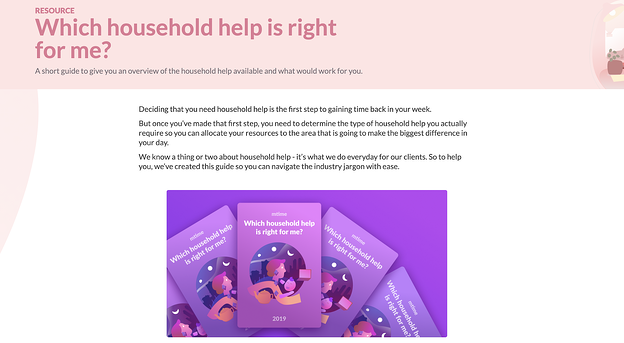
Through the lead gen campaign form, they also ask one simple question to help qualify new leads – what is your postcode. This helps them to segment their leads and exclude anyone who doesn’t live in an area they service.
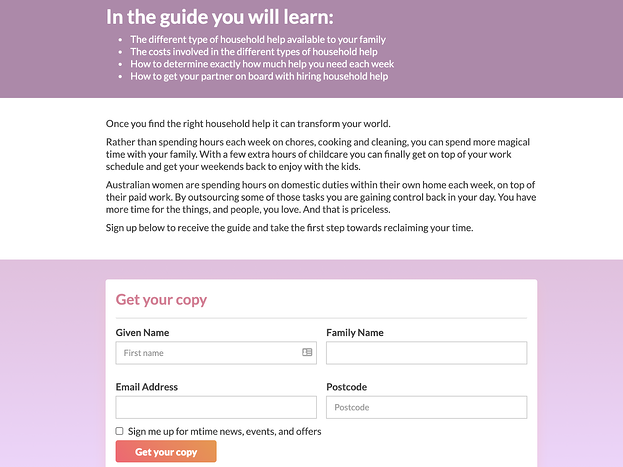
12. Success stories and testimonials
What’s more valuable than you saying you’re going to bring success to your customers? An inside look at someone else who’s been in their shoes and achieved the same goals they’re hoping to achieve.
Case studies and testimonials are some of THE most powerful weapons in your arsenal when it comes to lead generation strategies. They build your credibility as a company using stories from real customers who have seen tangible outcomes from working with your business. A powerful success story can make all the difference in getting a visitor over the line, or converting existing leads into paying customers.
Here are a few things to keep in mind when putting together testimonials:
- Incorporate success stories and testimonials wherever it makes sense in your marketing. This could be a quote from a happy client on the homepage, a case studies section on your website, a podcast interview, a video on your social media, or even a piece of gated long-form content like an eBook.
- Use quantitative outcomes whenever possible. Provide concrete numbers for each case study, such as increasing sales by X% or achieving X within Y timeframe.
- Get permission from existing customers and clients to use their real name and business. This is far more powerful than saying “a customer in X industry”.
HubSpot does this incredibly well with the “Customer Stories” section on its website:

By highlighting Sendle’s massive 400% increase in acquisitions from inbound marketing, they instantly pique the audience’s interest and makes them want to read more. Hubspot has also featured a video format of the story for people who prefer to quickly watch a testimonial rather than read it.
But it doesn’t stop there. Scroll further and you’ll see they’ve featured logos from other established brands to add even more credibility. Plus, they make their customer stories more relatable by allowing prospects to filter by industry or by business type.
13. Optimised web forms
You can’t have a powerful lead generation strategy without talking about your forms. Lead generation forms have a direct impact on your conversion rates, and are a key stepping stone in your customer’s path to purchase.
Despite this, you’d be surprised at how many marketers stick a form at the bottom of their landing page without modifying the fields, looking at the form length, testing its positioning, or tweaking the CTA.
There are four best practices to consider when optimising your web forms:
- Placement: Ensure your form appears above the fold or can be found quickly on your landing page.
- Length: Keep your form as short as possible, while still capturing the vital information you need. As a benchmark, the average form contains 5 fields.
- Form fields: Only capture for the essential information you need to contact and qualify your lead, such as their name, email or phone, and company name.
- CTA: Most forms have “Submit” as the default call-to-action, but this isn’t necessarily the best one for your form. You could choose to add more urgency with time-sensitive words like “Enquire now” or soften the CTA with text like “Click here”. The key is to A/B test different options to see which resonates with your audience.
Here’s a great example of a lead generation form from SEO expert Neil Patel:
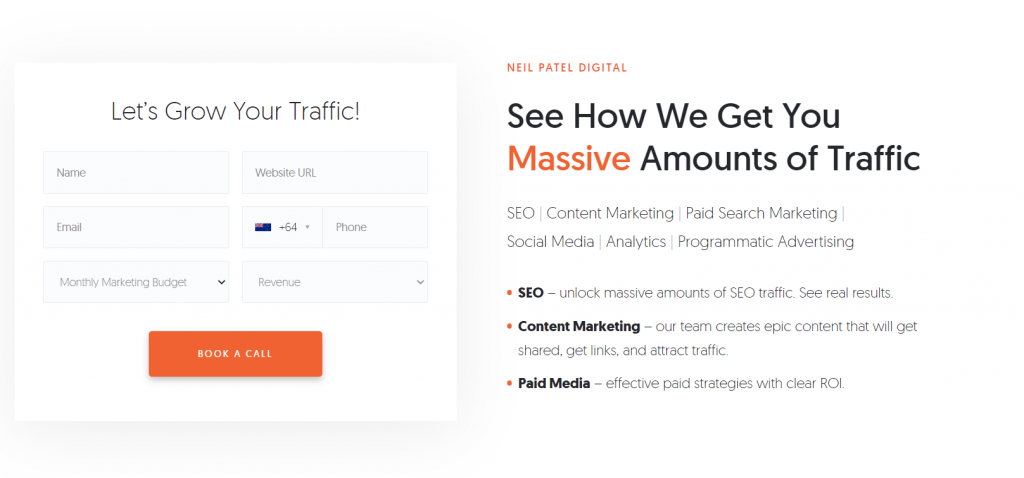
In this form, Neil provides site visitors with a compelling reason to get in touch (to get massive amounts of traffic). Then when it comes time to capture information, he asks for just enough to qualify the lead with revenue and monthly marketing budget, all without getting too invasive. He’s also tailored the CTA to his offering by inviting people to book a call to get their free custom strategy.
Here’s another lead generation strategy example from Hult International Business School:

On top of being clean and simple, Hult also creates a sense of urgency to their form by including the upcoming deadlines on the left-hand side of the landing page. They also make it easier for their admissions team to qualify leads by asking students for their program of interest.
Last but not least, the “Create Profile” button is a softer approach than “Submit” and provides them with opportunities to learn more about their leads.
14. Track visitor behaviour
The best way to understand your prospects? Observe their behaviour using a free tool like Hotjar or Crazy Egg.
Both tools allow you to visualise how users navigate your site through heatmaps:
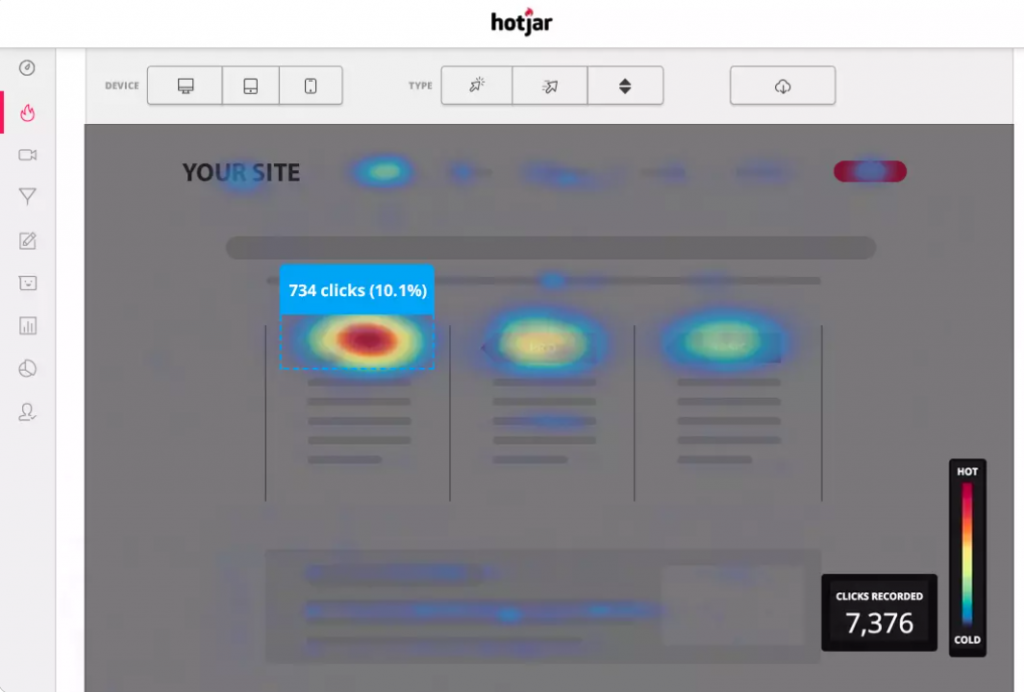
As well as recordings of their movement on your site:
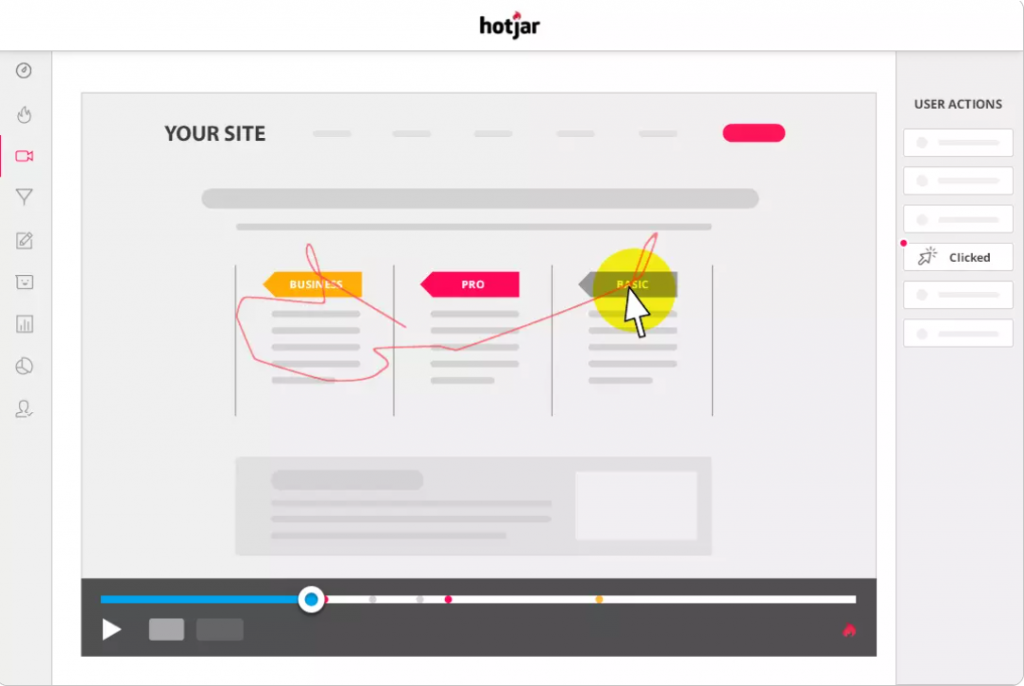
You can use this to quickly identify where users are spending the most time on your website, and which content is resonating most with them. This data is an absolute gold mine when it comes to optimising your landing page design, lead magnets, and forms to maximise your conversion rate from lead generation strategies.
The lead generation process
The lead generation process is not as simple as throwing a few lead magnets on your website and waiting for the leads to roll in. There’s a lot of work that goes into ensuring your leads seamlessly progress through the stages from awareness to consideration and conversion.
If you are new to lead gen, here’s a lead generation campaign roadmap you can follow to bring in more high-quality leads into your business.
Understand and define your leads
Effective lead generation starts well before you think it does. Before you even think about creating a funnel or get excited about lead magnets and the like, the first step is to define who your leads are.
If you have sales data, look at what that tells you about the demographics and behaviour of past customers. This will not only help to define the picture of what your ideal lead looks like, but it will also help you to understand their pain points. When you understand the pain points of your target audience you can target your content and other lead generation strategies to appeal to them.
But don’t get too far ahead of yourself. At this stage, you are simply creating the persona of your ideal lead. And you are working with your sales team to define what MQL, SQL and PQL look like in your customer funnel.
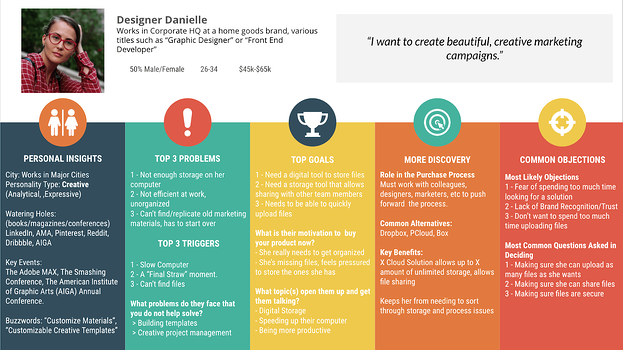
Image source: Lean labs
Map out your lead gen roadmap
Plan out the entire pathway your website visitors will take from the time they discover your brand to when they land on your website and how you capture them into your funnel.
Consider:
- What are your most popular lead generation channels? SEO? PPC? Social networks?
- When they land on your website, what pain points are you addressing with each piece of content?
- While they are consuming that content, what is the call to action (CTA) that will encourage them to part with their email address or phone number?
- What lead magnets do you need to create? What about landing pages?
As you start answering the questions you’ll build out your roadmap. You’ll know what you need to create and build to start generating leads for your business.
Score your leads
Scoring is about identifying how interested a lead is in your brand. What is the likelihood of them taking steps towards becoming a customer?
Now, you aren’t going to sit and manually score every single lead. You need an intuitive CRM or marketing automation software to rank, segment and organise your leads based on behaviour and characteristics so your sales team can identify the highest quality ones to pursue.
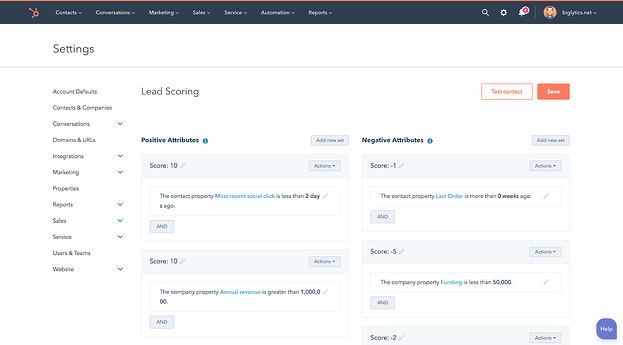
Image source: Hubspot
Nurture your leads
Once you’ve scored your leads, you’ll need to nurture them. For most leads you capture, they won’t jump straight from giving you their email address to immediately parting with their money. They need to learn more about your brand and product or service before they’re ready to buy.
Nurturing leads is how you build a relationship with them.
Whether your nurturing process involves a discovery call or personal email or it is all automated in a workflow, think of nurturing like gentle nudges that push a lead through your sales pipeline. With every little nudge – email, phone call or other direct communication – you are giving them confidence in your brand and getting them closer to the sale.
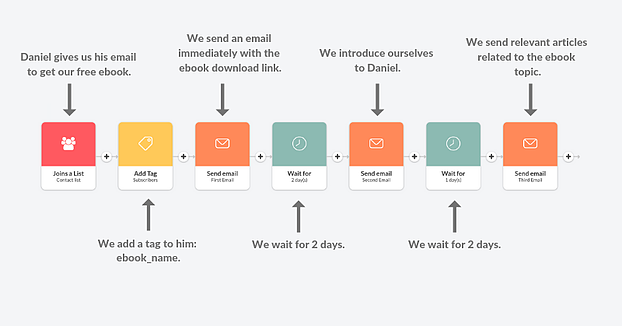
Image source: Automizy
Measure and refine
There is absolutely nothing about digital marketing that should be set and forget.
The best lead generation strategies use A/B testing to optimise for the best results. You can test one CTA against another or switch imagery, copy or other elements of your pages to see consistent improvements in your lead gen activities. Remember to just test one element at a time.
One thing I want you to remember is that lead generation is not straight customer acquisition. Not every lead that enters your lead funnel will convert. And that’s ok. That’s why you have the scoring and nurturing element of the process to know where to direct your efforts.
How to qualify a lead
The lead qualification part of the process is something that is often missing in a lead generation strategy. Remember how I said that lead generation isn’t straight customer acquisition? There are some leads who, no matter how much you nurture them, will never convert. You can send them email after email, offer after offer, and you will get nothing.
This is why the beginning of the lead gen process is so important – defining and understanding your leads. When you understand who your ideal customers are, you can much more easily identify leads through their demographics, behaviour and other characteristics.
I’ve already touched on lead scoring as part of the lead generation process, but now I want to go into more detail. As your capture leads, lead scoring isn’t a manual process of looking at each lead. Your CRM software should be set up to track and identify certain behaviours to then assign a score to each lead.
The way leads are scored differs from business to business. Higher value products and services will have a more complex lead scoring process than lower value products. In the case of B2B customers, there is also likely a manual element of scoring leads based on discovery calls and sales meetings.
Across your online marketing efforts, you should be tracking the behaviour of your leads. There are a few things to look for here.
Start by asking the right questions
A prospect isn’t going to fill out a huge questionnaire the first time they land on your website. But, depending on your ideal customer persona, there might be a few questions you can add to help with the qualification process.
Examples of this might be:
- A software company that has a SaaS solution for managing large teams might ask the size of the team a lead works in and their role in the team. If the person is a sole trader or doesn’t have a decision-making role, they won’t score highly.
- An architect who designs high-end homes might ask the lead about their budget or when they are intending to build their home. The answers to these questions can help them determine if the lead is a good fit for their services.
Another approach you can take is to use your lead forms as an opportunity to ask prospects what they are looking for from a product or service. This can be a simple checkbox against certain criteria that they indicate they value most.
How does this help? Well, if the lead indicates that price is one of the things they are looking for, but your product or service is on the higher end, they aren’t going to get a high score. However, if they indicate quality and customer service are important when that’s your jam, then up their score goes.
Website engagement
In the days before digital, if a prospect kept walking past your front door just peeking in occasionally, you would be worried. But in the digital age, regular visits to your website can be a sign of intent.
The beauty of it is, you can track how much time a lead is spending on your website, what pages they are viewing and where they go before completing your lead form. They might come back to your website multiple times and download multiple lead magnets, all of which you can track.
The more engaged they are with your website and the more they look at sales information such as pricing pages the closer they are to conversion.
Email marketing engagement
When someone completes a lead generation form and hands over their email address, that could be the end of your relationship. They may never open your emails and could possibly unsubscribe very quickly.
This is all behaviour you can track and score. If a lead opens every email marketing blast you send and, more importantly, clicks through to your website from those emails, they will get more points added to their score.
Social media engagement
Does the lead follow you on social media? Do they like your posts? Or, better yet, do they comment on your posts?
The more engaged a lead is with your brand across your entire pool of online marketing assets, the more qualified they are.
Everything I’ve just told you is very general. There usually isn’t a single white flag your leads will wave, metaphorically speaking, that will indicate that they are a hot lead ready to hit pay now. Sometimes that’s the case, but usually, it is a combination of factors. They fit into the right demographics, engage with your website to learn more about what you do, follow you on social media and start opening your emails.
You also need to look for red flags – time-wasters who will never do anything more than download your lead magnets to soak up all the freebies. Qualifying leads is as much about chasing good quality leads as it is about weeding out the low-quality ones.
More leads than you could ever dream of
As marketers, the pressure is always on to deliver a stream of valuable, qualified leads through the sales funnel.
You already understand the importance of lead generation – the hard part is coming up with ideas that work.
Whether you use all of the ideas above to generate leads, or just a handful, you’ll be raking qualified leads in no time!
It’s a lot to take in, so you may need a little help. That’s where Online Marketing Gurus can make things easy.
At OMG, we have the skills and expertise to fill your funnels with hundreds or thousands of leads. Our approach and B2B lead generation strategies are based on evidence and data to get you the best results and return on your investment.
Before you even sign up with us we start with a free audit to identify quick wins and long term strategy roadmaps. We look through everything – from your SEO to Google Ads, social media, email marketing and content marketing – to uncover the gaps and opportunities within your online marketing strategy.
Claim your free digital audit (usually valued at $2,000) with our experts today. We’ll take a good, hard look at your website and tell you what’s working and what’s not.
The best part is, we’ll outline the opportunities to bring in even more leads, both in the short-term and the long-term. All this for FREE!









